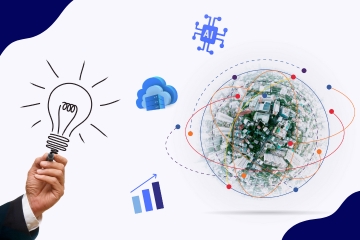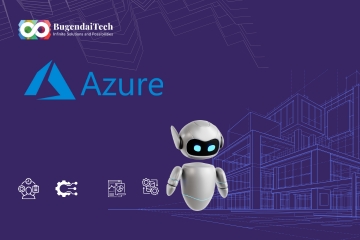In today's digital age, AI image processing has emerged as a pivotal technology, transforming how we interact with visual data. Integrating artificial intelligence (AI) into image processing has unlocked unprecedented healthcare, security, entertainment, and autonomous vehicle capabilities.
This blog explores the evolution of image processing, the impact of AI integration, and the advancements enabling real-time analysis.
The Evolution of Image Processing
Image processing involves manipulating images to enhance quality, extract valuable information, or produce desired visual effects. Its origins trace back to the early 20th century with analog techniques like photo editing. However, the advent of digital computing in the mid-20th century marked a significant leap. Digital image processing allowed for more precise and complex manipulations, including filtering, edge detection, and image transformation.
The 1980s and 1990s witnessed the proliferation of digital cameras and the Internet, driving the need for efficient image compression and transmission techniques. Formats like JPEG and PNG became ubiquitous, enabling the storage and sharing of high-quality images. Concurrently, the development of software tools like Adobe Photoshop democratized image editing, making it accessible to the masses.
AI Integration in Image Processing
Integrating AI, particularly machine learning (ML) and deep learning (DL), has revolutionized image processing. Traditional methods relied on predefined algorithms and manual feature extraction. In contrast, AI-driven approaches learn from vast datasets, identifying patterns and features autonomously.
Machine Learning
ML algorithms, such as support vector machines and decision trees, laid the groundwork for automated image analysis. These algorithms could classify images, detect objects, and segment regions based on learned patterns. However, their performance was limited by the need for manual feature extraction and the curse of dimensionality in high-resolution images.
Deep Learning
The breakthrough came with deep learning in image processing, particularly convolutional neural networks (CNNs). CNNs consist of multiple layers that automatically learn hierarchical features from raw images. Pioneering models like AlexNet, VGGNet, and ResNet demonstrated exceptional performance in tasks like image classification and object detection, surpassing traditional methods.
Generative Models
Generative adversarial networks (GANs) further expanded the possibilities of image processing. GANs consist of a generator and a discriminator network in a competitive setup, producing realistic images from random noise. Applications range from image synthesis and super-resolution to style transfer and image inpainting.
Applications of AI in Image Processing
The fusion of AI and image processing has permeated various domains, driving innovation and enhancing functionality.
Healthcare
AI in healthcare imaging is transforming medical diagnostics. Algorithms can analyze X-rays, MRIs, and CT scans to accurately detect diseases like cancer, fractures, and neurological disorders. For instance, Google's DeepMind developed an AI system that outperforms radiologists in diagnosing breast cancer from mammograms.
Autonomous Vehicles
AI for autonomous vehicles relies on real-time image analysis for navigation and safety. AI algorithms analyze data from cameras, lidar, and radar to identify objects, predict movements, and make driving decisions. Tesla's Autopilot and Waymo's autonomous vehicles exemplify the critical role of AI in this sector.
Security and Surveillance
AI security and surveillance systems are enhanced by enabling automated monitoring and anomaly detection. Deep learning-powered facial recognition technology can identify individuals in real-time, aiding law enforcement and security agencies. However, this application raises ethical concerns regarding privacy and bias.
Entertainment
AI-driven image processing enables sophisticated visual effects and content creation in the entertainment industry. Deepfake technology, while controversial, showcases the potential for generating realistic videos by swapping faces or altering expressions. Additionally, AI tools assist in video editing, color correction, and animation.
Real-Time Image Processing: Challenges and Advancements
Real-time image processing involves analyzing and responding to visual data instantly. Achieving this requires addressing several challenges:
Computational Demand
Real-time processing demands substantial computational power to handle high-resolution images and complex algorithms. Advances in hardware, such as GPUs and TPUs, have been instrumental in meeting these requirements. Edge computing, which processes data locally on devices rather than in centralized servers, also plays a crucial role.
Latency
Minimizing latency in image processing is critical for applications like autonomous driving and live video streaming. Techniques like model optimization, including quantization and pruning, reduce the computational load without significantly sacrificing accuracy. Furthermore, algorithms like YOLO (You Only Look Once) are designed for real-time object detection.
Data Bandwidth
Transmitting high-resolution images and videos in real time requires substantial bandwidth. Efficient compression algorithms and protocols like H.265 (HEVC) help mitigate this issue, ensuring smooth data transmission.
Robustness
Real-time systems must operate reliably in diverse and unpredictable environments. Ensuring robustness involves training AI models on diverse datasets and implementing techniques like data augmentation to enhance generalization.
Future Prospects
The future of image processing, bolstered by AI and real-time capabilities, holds immense promise. Emerging trends include:
Edge AI
Deploying AI models on edge devices like smartphones, drones, and IoT devices will enable real-time image processing with reduced latency and improved privacy. Technologies like TinyML are making this feasible by creating lightweight models suitable for edge deployment.
Explainable AI (XAI)
As AI-driven decisions become more pervasive, understanding and interpreting these decisions becomes crucial. Explainable AI aims to make AI models transparent, providing insights into how and why decisions are made. This is particularly important in critical applications like healthcare and security.
Augmented Reality (AR) and Virtual Reality (VR)
AR and VR applications rely heavily on real-time image processing to create immersive experiences. Advancements in AI will enhance object recognition, scene understanding, and user interaction within these virtual environments.
Ethical AI
Addressing ethical concerns related to AI in image processing is imperative. As technology advances, ensuring fairness, reducing bias, and safeguarding privacy will be critical challenges. Regulatory frameworks and industry standards will play a vital role in shaping the responsible use of AI.
Conclusion
AI image processing has come a long way from its analog roots to the sophisticated AI-driven techniques of today. The integration of AI has unlocked new possibilities, enabling real-time analysis and transforming industries across the board. As technology continues to evolve, the potential for further advancements in image processing is boundless.
However, navigating the ethical implications and ensuring that these technologies are developed and deployed responsibly is crucial. The future of image processing, intertwined with AI, promises to be exciting and transformative.






Comments